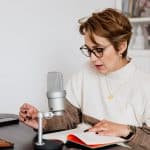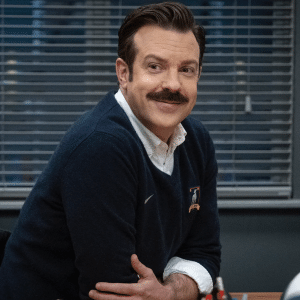Adrian Perica is a very busy man. Over the past 18 months, the mergers and acquisitions chief at Apple has been scouring the globe looking for deals, snatching up everything from search engines and data analytics to mapping software and motion tracking chips.
Such a buying spree has ignited fierce speculation in tech circles and on Wall Street about Apple’s future ambitions, especially as smartphone and tablet sales start to slow. Most of that speculation has centered on wearable technology or perhaps a souped-up upgrade of Apple TV.
But Apple is thinking bigger. Much bigger.
A source tells The Chronicle that Perica met with Tesla CEO Elon Musk in Cupertino last spring around the same time analysts suggested Apple acquire the electric car giant.
A spokeswoman for Tesla declined to comment. Apple did not respond to a request for comment.
The newspaper has also learned that Apple is heavily exploring medical devices, specifically sensor technology that can help predict heart attacks. Led by Tomlinson Holman, a renowned audio engineer who invented THX and 10.2 surround sound, Apple is exploring ways to predict heart attacks by studying the sound blood makes at it flows through arteries.
Taken together, Apple’s potential forays into automobiles and medical devices, two industries worlds away from consumer electronics, underscore the company’s deep desire to move away from iPhones and iPads and take big risks.
“Apple must increasingly rely on new products to reignite growth beyond the vision” of late founder Steve Jobs, said Bill Kreher, an analyst with Edward Jones Investments in St. Louis. “They need the next big thing.”
Actions Suggest Urgency
Of course, Apple’s dalliances may never bear fruit — so to speak. With funds of almost $160 billion in cash and investments, the company can afford to indulge a bit.
But Apple’s moves of late suggest a bit more urgency. Since the company hired Perica from Goldman Sachs in 2009, Apple has quickened its pace of acquisitions. Last month, the company disclosed in a regulatory filing that it spent $525 million on deals in the previous quarter, almost double what it spent for the entire previous year.
While iPhones and iPads remain tremendously popular, the U.S. market for smartphones and tablets is quickly maturing. At home and overseas, Apple faces strong competition from Android-based mobile devices.
Until now, most of Wall Street’s attention has focused on Apple’s long rumored iWatch device. Along with Google Glass, such “wearable technology” represents the next wave of consumer electronics.
Wearable Devices a Good Fit
Wearable devices make intuitive sense for Apple; electric cars and cardiac monitors not as much. And that’s exactly why Apple should pursue those ideas, some analysts say.
In October 2013, German investment banking analyst Adnaan Ahmad created a media stir when he wrote an “open letter” to Apple CEO Tim Cook and board director Al Gore, urging the company to acquire Tesla.
“I know this is radical and potentially ‘transformative’ but this would radically alter Apple’s growth profile,” Ahmad wrote. “In Elon Musk, you could strike up a partnership and obtain a new iconic partner to lead Apple’s innovation drive.”
As it turns out, Apple already had the same idea.
Six months before Ahmad’s letter, Musk met with Perica and probably Cook at Apple headquarters, said the source, who spoke on the condition of anonymity to protect business relationships. While a megadeal has yet to emerge (for all of its cash, Apple still plays hardball on valuation), such a high-level meeting between the two Silicon Valley giants involving their top dealmakers suggests Apple was very much interested in buying the electric car pioneer.
Analysts say it’s unclear what Tesla would gain from such a deal.
“They’d get access to deep pockets, but Tesla’s got access to Wall Street right now,” said Andrea James, who covers Tesla for the Dougherty & Co. investment bank. “I could see a partnership more than a takeout.”
Commonalities With Tesla
A partnership, perhaps, could result in the large touch-screen on Tesla’s dashboard bearing Apple’s imprint.
Or maybe Musk just wants to preserve his options, James said. Although Tesla has been on a tear in the past year, with rising sales of its Model S sedan, the company has endured a few near-death experiences in the past, when cash ran low. It never hurts to keep lines of communication open, she said.
“You could see a company with that kind of history making sure that they’ve got their options lined up,” James said. “Tesla might get a backstop there.”
Tesla and Apple already have plenty in common. Both have built brands based on advanced engineering and stylish user-friendly design. And each company has become a symbol of Silicon Valley innovation — even among people who don’t own their products. Tesla has a habit of poaching former Apple executives and engineers — none more notable than former Apple marketing guru George Blankenship. He developed Tesla’s retail concept of sleek, company-owned stores rather than franchise dealerships. Those stores bear more than a passing resemblance to Apple Stores. (Blankenship left Tesla in November for undisclosed reasons.)
Apple also appears deeply interested in heart-related medical devices. The company has been beefing up its health care expertise, hiring doctors and lawyers with experience in lobbying the Food and Drug Administration.
In December, a high-level Apple team led by operations whiz Jeff Williams met with FDA chief Dr. Margaret Hamburg and Dr. Jeffrey Shuren, who oversees agency approval for medical devices, to discuss “mobile medical applications,” according to FDA records.
Requesting Patents
Apple has even requested a few patents. According to one document filed with the U.S. Patent and Trademark Office, the company is developing technology that could possibly unlock a device like an iPhone by identifying the owner’s unique electrical signals from the heart.
Holman’s role in Apple’s medical ambitions is particularly intriguing because of his pioneering audio work in movies. As corporate technical director at Lucasfilm, Holman developed revolutionary THX technology that consistently reproduces high-quality sound in movie theaters and homes that most closely matches the original audio mix of films.
Though Apple has never confirmed it, the company hired Holman in 2011 to “provide audio direction,” according to his LinkedIn profile. At the time, observers assumed Holman would focus his efforts on boosting the audio quality of MacBooks and iPhones.
Predicting Heart Attacks
But under Holman, Apple is exploring ways to measure noise “turbulence” as it applies to blood flow. The company wants to develop software and sensors that can predict heart attacks by identifying the sound blood makes as it tries to move through an artery clogged with plaque, the source said.
That technology, if ever successful, could open the sizable medical device market to Apple, according to Kreher, the Edward Jones analyst.
“It could be part of a larger portfolio of solutions aimed at the broader ecosystem of health care,” he said. “That would be fascinating to watch.”















